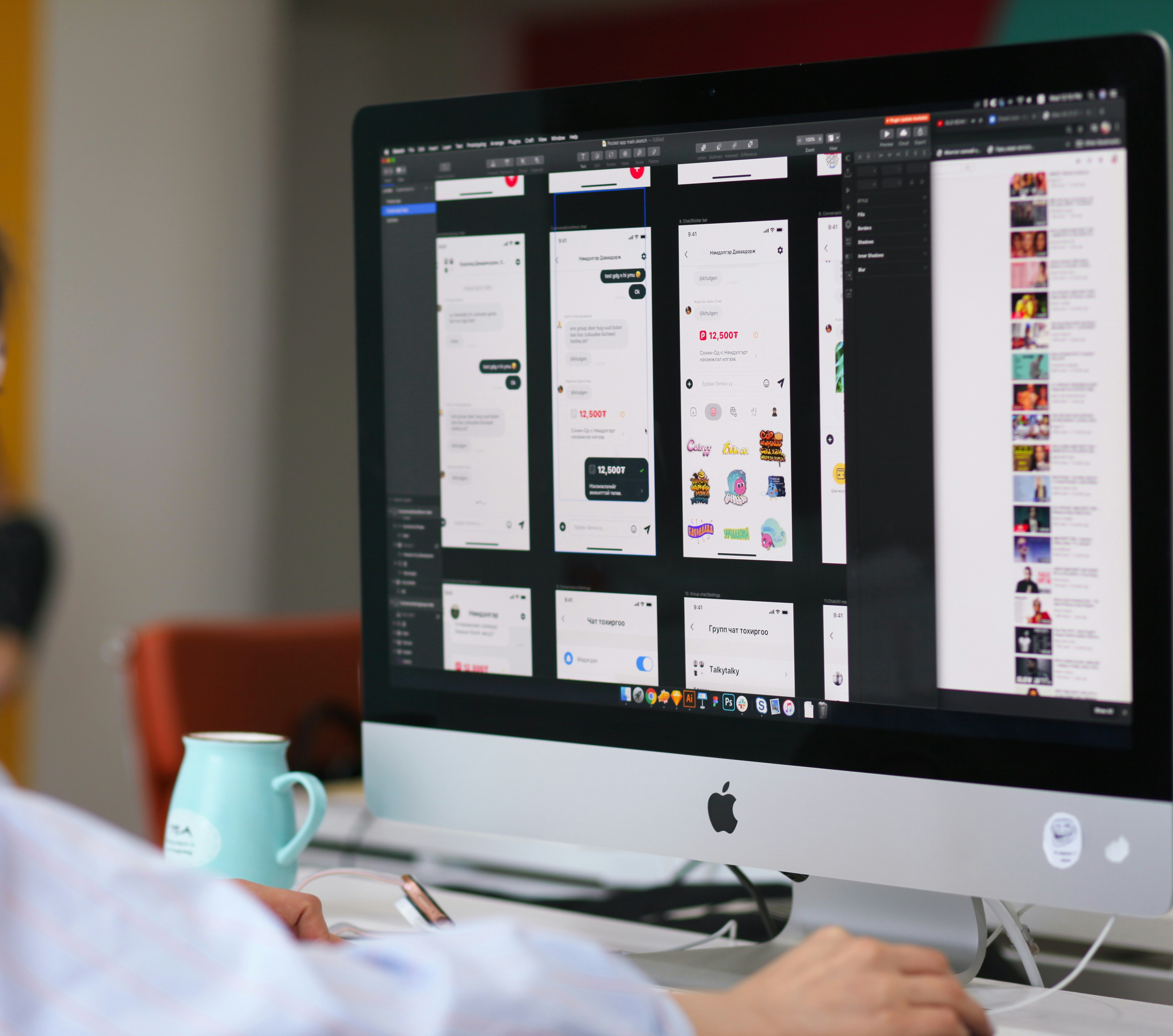
The Role of UX/UI Design in Boosting Customer Engagement
Discover how great UX/UI design can turn visitors into loyal customers. From first impressions to seamless user journeys, this post reveals why design is more than looks it’s about creating trust, engagement, and results. Learn more inside.
Imagine walking into a store where the layout is confusing, the signs are hard to read, and no one seems to know where anything is. Chances are, you’d walk right back out. Now, imagine a beautifully arranged space with clear signage, helpful staff, and products exactly where you expect them to be that’s the store you’ll stay in longer, maybe even make a purchase.
That’s exactly what good UX/UI design does for your digital presence.
In a world where users make snap judgments in seconds and attention spans are shorter than ever, the experience you deliver on your website, app, or product can make or break your business. And it’s not just about aesthetics it's about how things work, how intuitive they feel, and how well they meet the user’s needs.
In this article, we’re diving into the role of UX (User Experience) and UI (User Interface) design in driving customer engagement and why ignoring these disciplines is no longer an option.

Understanding UX and UI Design: What’s the Difference?
Before we go further, let’s clarify two terms that are often used interchangeably but actually refer to different aspects of design:
- UI (User Interface) Design focuses on the look and feel of a digital product. It’s about colors, typography, spacing, buttons, and layout. In short, UI is how the product looks.
- UX (User Experience) Design is about the entire experience a user has when interacting with a product. It covers user flows, interactions, accessibility, usability, and overall satisfaction. UX is how the product works.
UI is part of UX but UX encompasses far more. Great UI without strong UX can still leave users frustrated. But when both are done well, the results are transformative.
Why UX/UI Design Matters for Customer Engagement
Customer engagement isn't just about keeping someone on your site longer. It’s about creating moments of connection, satisfaction, and trust that encourage users to act whether that means signing up, making a purchase, or coming back for more.
Here’s how UX/UI design contributes to that goal:
1. First Impressions Happen Fast
Studies show it takes less than 0.05 seconds for users to form an opinion about your website. That impression often determines whether they stay or leave.
Your visual design (UI) creates that initial impact, while your experience (UX) determines whether users feel confident exploring further. Clean layouts, readable typography, cohesive branding, and intuitive navigation all contribute to that instant trust.
2. Simplifying Complex Journeys
Users come to your site or app to accomplish something: buy a product, find information, schedule a service. Every click, scroll, and interaction matters.
UX design ensures that these journeys are smooth and frustration-free. Good UX anticipates user behavior, removes friction, and simplifies decision-making. The result? Users stay longer, engage more deeply, and convert at higher rates.
3. Encouraging Action Through Design
Engagement is often measured by actions: clicks, downloads, shares, purchases. UX/UI designers use visual hierarchy, contrast, and layout strategy to guide users toward those actions.
Well-designed call-to-action buttons, logical content flow, and micro-interactions (like hover states or success messages) encourage users to interact without hesitation.
4. Reducing Bounce Rates and Abandonment
Nothing kills engagement faster than confusion. If a user lands on a cluttered page or can’t figure out where to go next, they’ll bounce.
Intuitive navigation, predictable page structure, and responsive design ensure that users stay engaged. Mobile optimization is especially crucial more than half of web traffic now comes from mobile devices.
5. Creating Emotional Connections
Design is emotional. Colors, imagery, and tone shape how users feel about your brand. This emotional layer contributes significantly to customer engagement.
Think about Apple, Airbnb, or Spotify. Their interfaces don’t just function they feel personal, welcoming, and intentional. That’s the power of combining thoughtful UX with visually engaging UI.
Real-World Impact: Data That Proves the Point
UX/UI isn’t just a "nice to have" it delivers measurable results. Here’s what the data shows:
- A well-designed user interface can raise a website’s conversion rate by up to 200%.
- Better UX design can yield conversion rates up to 400%.
- 88% of users are less likely to return to a website after a bad user experience.
- Companies that invest in UX see lower customer acquisition costs, higher customer retention, and increased market share.
These aren’t abstract benefits they translate into tangible business growth.
Building a UX/UI Design Strategy for Your Business
So how can you start investing in UX/UI design to drive engagement? Here’s a step-by-step framework:
1. Know Your Audience
Everything begins with understanding your users. What are their goals, frustrations, and behaviors? Use surveys, interviews, and analytics to gather insights. Build personas to guide design decisions.
2. Audit Your Current Experience
Look at your current website or app through the eyes of your audience. Where are the drop-off points? What’s confusing or slow? Conduct usability testing or hire a freelance UX auditor to get a clear picture.
3. Map the User Journey
Every interaction—from landing on a homepage to completing a purchase should feel seamless. Journey mapping helps visualize each step and identify where users might be falling off.
4. Invest in Wireframes and Prototypes
Before jumping into visual design, build wireframes to plan layout and flow. Use clickable prototypes to test navigation and user behavior. This iterative process helps prevent costly redesigns later.
5. Prioritize Accessibility and Inclusivity
Inclusive design ensures everyone can use your product, including users with disabilities. This isn’t just ethical—it expands your audience and builds trust.
6. Collaborate With Designers Who Understand Business Goals
Designers aren't just decorators they’re problem solvers. Work with UX/UI freelancers who ask about your KPIs, conversion goals, and brand strategy. The best designers align creativity with results.
Common UX/UI Mistakes That Hurt Engagement
Even well-intentioned businesses can stumble. Here are a few pitfalls to avoid:
- Overdesigning: Too many animations, flashy effects, or complex layouts can confuse users.
- Neglecting Mobile Users: If your mobile site isn’t optimized, you're losing a huge portion of traffic.
- Slow Load Times: Every second of delay increases bounce rate. Speed matters.
- Unclear Calls-to-Action: If users don’t know what to do next, they’ll do nothing.
- Inconsistent Design: Clashing fonts, colors, or layouts create confusion and reduce trust.
When to Hire a UX/UI Designer
You don’t need to be a big tech company to benefit from UX/UI design. In fact, small businesses and startups often see dramatic improvements with even modest design investments.
Consider hiring a freelance UX/UI designer if:
- You’re launching a new product or website
- Your current platform has high bounce rates or low conversion rates
- You’ve received user complaints or negative feedback
- You’re unsure how to prioritize changes to your site or app
Platforms like Loxala connect you with verified designers who can audit, design, or optimize your digital experience.
UX/UI as a Long Term Investment
Think of UX/UI design not as a one-time project, but as an evolving part of your business strategy. As your audience grows, tech changes, and expectations shift, your digital experiences need to adapt.
The companies that lead in their industries don’t just have great products. They make every interaction feel intuitive, satisfying, and even delightful.
.jpg)
Final Thoughts: Design With People in Mind
At the end of the day, UX/UI design isn’t just about pixels and patterns. It’s about empathy. It’s about understanding your users, meeting their needs, and removing barriers to engagement.
By investing in thoughtful UX and polished UI, you’re not just improving your website you’re inviting users to stay, connect, and trust your brand. And in a digital-first world, that kind of engagement is priceless.
Ready to take your digital experience to the next level? Loxala makes it easy to find expert UX/UI designers who know how to design for people and results.
Ready to make your designs accessible and inclusive?
Join Loxala to connect with clients who value inclusivity and create impactful digital experiences.
Start Using Skill Matcher for Free – Find Your Job Easily!
Simplify your job search with Skill Matcher. Whether you're hiring or looking for work, our tool makes the process seamless and fast.
.jpg)
Discover how freelancers can use AI tools to boost productivity, improve quality, and deliver smarter results across writing, design, development, and marketing.

Learn how to write content that clients love. This quick guide covers the essentials of freelance writing from understanding your audience to crafting headlines and delivering polished, high-value content. Perfect for new and experienced freelancers alike.
.svg)